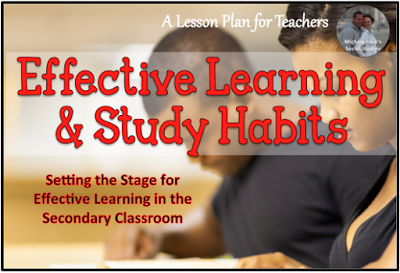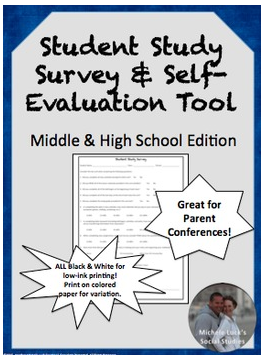Secondary students, while physically grown and developed, are still in the process of developing their cognitive abilities. To help them along, we can provide structure in the secondary classroom that will set them up with effective learning and study habits for the rest of their academic careers.
While each secondary classroom is, and should be, different, the structure for basic learning should be the same. This will help students to know what to expect and will help them to structure their own study strategies for most effective academic success.
What are the most Effective Learning and Study Habits to practice in the classroom?

They are utilizing practices based on the following 6 simple principles:
- Attention – Getting and keeping students’ attention is key. Make lessons relevant and use engaging bellringers to draw interest at the beginning of each day. Keep students engaged by involving them in every stage of the learning process and by assessing for comprehension and content understanding on a regular and frequent basis.
- Goal Orientation – Setting goals helps everyone to know where they are going, and then to get there faster and with less interference from distraction. In the classroom, these goals are specific objectives for each day and for each unit. They should tie together, be understood by students, and be reachable. HOWEVER – do NOT write “lesson plan objectives” on the board for student goal orientation. They do not care about the standards or the wordiness required in our lesson plans for the administration. Just state it simply and be clear on what you expect.
- Organization – Organization is KEY! Knowing where you are going, and transitioning to get there effectively helps reinforce the overall objectives of the lesson. More importantly, it helps students know what to expect and will help them to stay on task.
- Rehearsal – Practice makes perfect! We grew up with that explanation for every challenge we tackled. And it’s true. Studies show that we better retain content when we rehearse or practice it multiple times. Introduce content in varied ways, utilize varied activities, practice skills to reinforce content, rehearse all lessons with whole-class discussion wrap-ups, and always close with a check on the objective and its completion.
- Time on Task -Setting aside appropriate time for lessons is the greatest challenge for most teachers. We know what we want to teach, but knowing how long it will take depends on so many uncontrollable factors. The key to success in this area is being willing to step off the schedule when it is needed. More importantly, allow the time needed for activities, and do not push students to stop the learning process just to meet a time restraint.
- Depth of Processing – Students need to be engaged with challenging content. When they are forced to think harder, they will learn to think better, and they will eventually gain processing skills vital for more in-depth learning. In addition to teaching the process skills, it will also help student retain the content as they continue to process and practice the information.
Setting up this basic structure in your classroom can help students better focus their time and energy to help them learn more effectively and with less stress and frustration.
Need a tool to help students examine their learning and study habits? Take a look at this Student Study Survey in my TpT Store.


Happy Teaching!